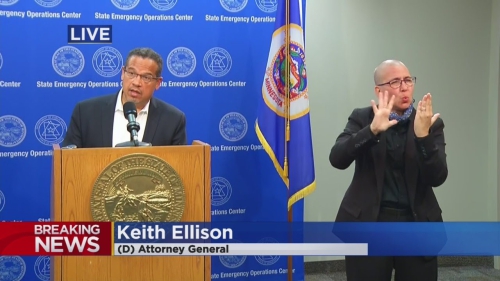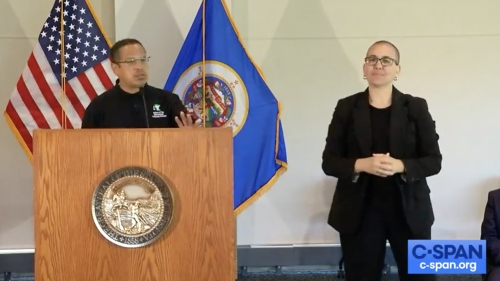America's Prisons Have Become a Costly Endeavor in Punishment
|
|
The U.S. prison population has now reached epidemic proportions and continues to grow. The prison population grew by a whopping 68% over the last decade, bringing the total number to two million, with another 14 million facing the likelihood of imprisonment. Currently, the rate of imprisonment in the U.S. is the highest in the world and America has thus become a nation of jailers. In the process, American society is paying a heavy price for it. From 1985 to 1996, the yearly expenditure on state prisons has more than doubled, from slightly under 13 million to over 27 million dollars.
And it is not just the adults that are involved in crime. There is the emergence of young so-called super-predators and the states are passing laws targeting these underage offenders. For example, the state of California will send an estimated 5,600 youth to adult prisons in the next 5 years.
This leads not only to a vital disconnect between the parents and children but even more worrisome are the new connections that are forged within the prison walls. Thus while for some it may provide a break from troubled life, many of the country's youth are exposed to a prison culture that contaminates and threatens the entire nation.
The communities that are infested with high crime are also socially isolated and racially segregated. This trend further damages the neighborhoods to an extent that it destabilizes the social cohesion of the entire area. In some neighborhoods, the crime has reached such dangerous levels that new arrests no longer reduce crime but rather drive its rate up. This is because arresting huge numbers so disrupts the social fabric that community ties crumble and crime can no longer be kept in check.
Even more troublesome is the skewed racial makeup of this prison buildup. A majority of the prison population is comprised of blacks and Latinos. These minorities see the futility of any enduring improvement in their current situation. Most of them see prison as their special preserve and believe that the predominant police function is putting them in cages. The atmosphere prevailing in the streets is that the cops are the king of American jungle and the blacks and Latinos are their prey in this dismal forest. This mentality is fed by the fact that they disproportionately live in communities where there are few opportunities, while attractions leading to their destruction are plentiful.
Thus it is obvious that fundamentally there is a pervasive, race-based inequity in the American system. A number of observations also support this conclusion. For example, an analysis by the Justice Policy Institute found that in Los Angeles, white youths are much more likely to be treated more leniently than nonwhites. Another national study found that minority youths were more likely than whites to be passed from juvenile to adult courts in every category of offense. According to Human Rights Watch, blacks make up nearly two-thirds of those sent to state prisons for drug offenses, although the white drug abusers outnumber them by more than five to one. While discussing such gross disparities, Los Angeles civil rights attorney Connie Rice says, "You can talk all you want about individual behavior. But we incarcerate poor kids for things the middle class kids get counseling for."
In 1974, sociologist Robert Morrison wrote a highly influential essay titled, What Works? Questions and Answers About Prison Reform, and concluded that nothing by way of reformation in prison works and that the very idea of prison reform was a sham. He argued that American society, frustrated with a growing crime rate, created numerous laws that dealt harshly with criminals. By 1979 Morrison had changed his mind, but by now this hard-line movement had taken a life of its own. This get-tough-with-criminals attitude still prevails when contrasted with efforts at reformation. As a result, the inmate populations in prisons are increasing to the point that the state and federal authorities can no longer cope with such a phenomenal increase. This trend has also spawned a private imprisonment industry whose shares are profitably traded on the Wall Street.
But the targeted criminal population did not vanish behind bars. More in, more out, eventually leads to an increase in the number of ex-offenders in the society. Thus the number of inmates released has increased from 424,000 in 1990 to 585,000 this year, according to Bureau of Justice statistics. For every inmate whose prison experience changes him for the better, there are a hundred others for whom it has worked towards a ruined life.
It is apparent from the above that something is gravely amiss in the American society. Before it gets completely out of hand, America needs to reflect on this situation and realign and reorder its priorities. Isn't it wise to provide a universal education, equally available across all races and ethnicities that emphasizes morals and values at school and at home? This by far seems to be a better solution, rather than spending millions more on the prison system. The results may not be as immediately apparent, but they will be far more enduring, producing decent citizens who work productively for themselves and society. But such a complete turn around of human personality is the reserve of faith and the systems associated with it. Unfortunately, secularist thought by its very nature is antagonistic to venturing into faith based teachings.
Still, for the immediate future, it is worthwhile for the American society to ask itself if in its striving to self-protect, it has actually weakened itself. The current policies have hurt minority communities. In fact, the damage may be even deeper since it fuels the notion that we can throw away human beings callously without actually caring for them. We must ask ourselves if it is morally justifiable to do so without much effort at salvaging them. A strategy of human reclamation would make sense in the long run not only for those locked down but also for the communities where they will eventually return.
From the available evidence, it is also clear that given the support of both the prisoners and staff, rehabilitation can work. This requires planning and great efforts to teach them job skills. Assistance must also be made to reintegrating them into the society that has become foreign to them. Fortunately, some prosecutors and court judges are now increasingly joining in this effort by tying punishment with rehabilitation and treatment. The prison authorities are providing some job skills but they need to be helped by a host of transition programs run by social workers, religious groups, prisoner advocates and in some cases, by ex-cons themselves outside of the prison walls. These programs should receive all the help from society at large.
________,_________________________________
Dr. Siraj Mufti currently serves as an Islamic consultant for the Correctional Corporation of America in Arizona. Previously he worked as a research professor at the University of Arizona and a chaplain with the U.S. Department of Justice.


















